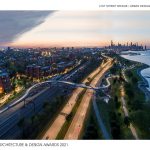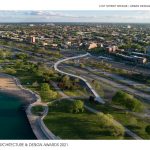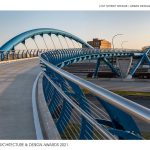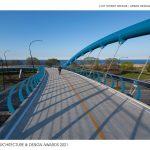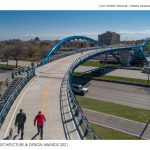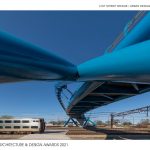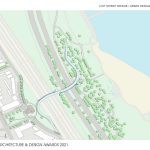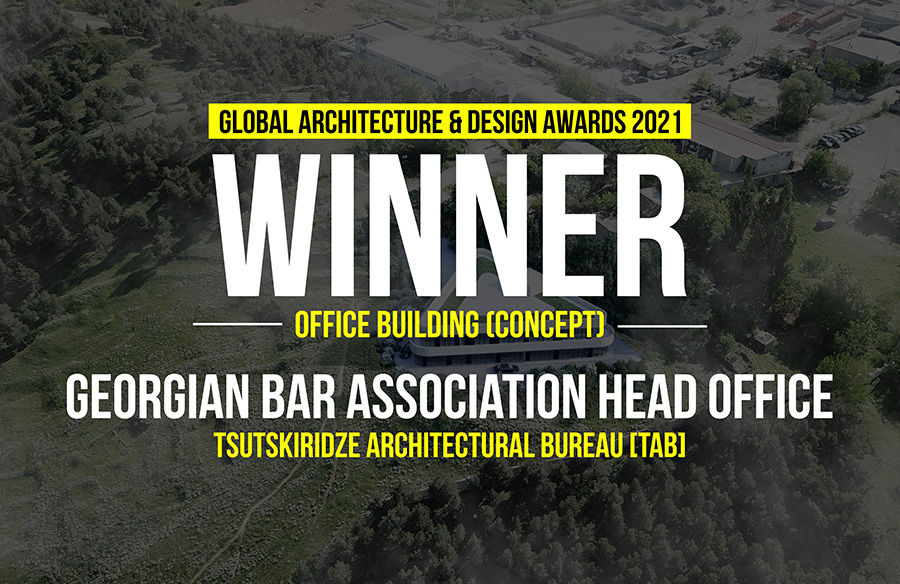The 41st Street Bridge, the result of an international competition called “Bridging the Drive,” is a major civic project that provides bicycle and ADA-compliant pedestrian, wheelchair, and stroller lakefront access for a long-underserved area of Chicago. The project’s primary goals were to connect the neighborhood west of the bridge with the lakefront to the east with an iconic structure that provides a dynamic, welcoming, and memorable experience. Before, the lakefront was difficult to reach because Lakeshore Drive and the train created an enormous barrier.
Global Design & Architecture Design Awards 2021
First Award | Urban Design (Built)

| Project Details | |
| Project Name: | 41st Street Bridge |
| Project Category: | Urban Design (Built) |
| Studio Name: | AECOM (Lead Engineer) with Cordogan Clark (Design Architect) |
| Design Team: | Owner/Client: City of Chicago Department of Transportation |
| Lead Civil / Structural Design Firm, Engineer of Record: AECOM | |
| Design Architect: Cordogan, Clark & Associates | |
| Landscape Architect: Terry Guen Design Associates | |
| Area: | 100,000 SF |
| Year: | 2019 |
| Location: | Chicago |
| Consultants: | Construction Engineering Firm: TranSystems |
| Contractor: | F.H. Paschen |
| Structural Engineer (Approach Structures): HBM Engineering Group | |
| Electrical Engineer: Singh & Associates | |
| Photography Credits: | James Steinkamp Photography |
| Text Credits: | Cordogan Clark & AECOM |
| Other Credits: | Chicago Department of Transportation (CDOT) Owner |
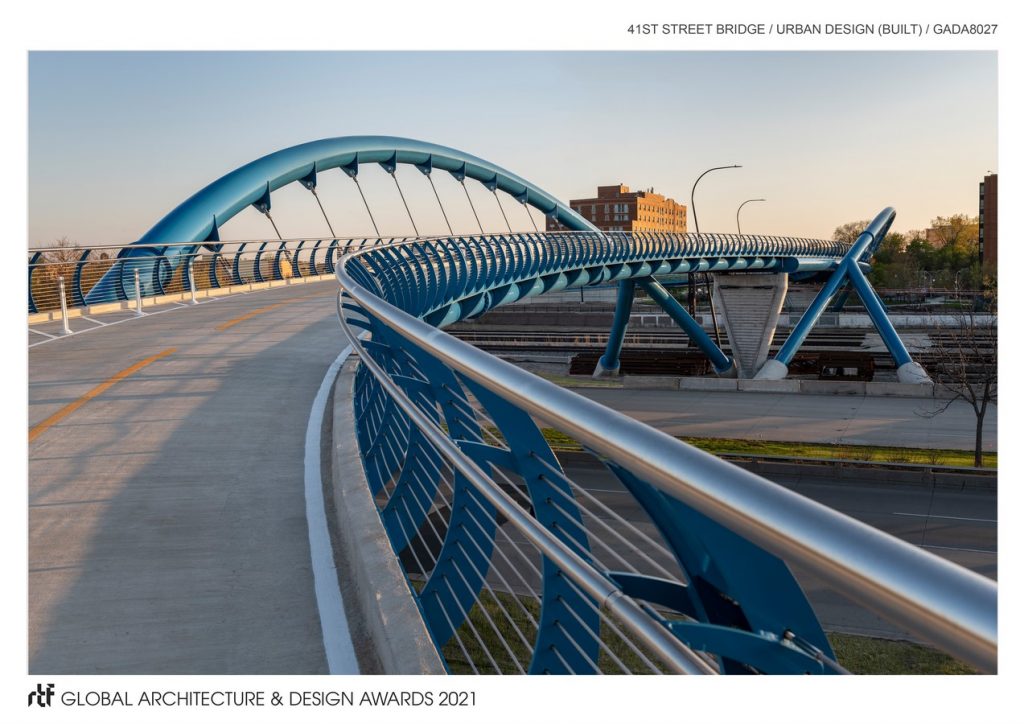
©James Steinkamp Photography
The 1,500-foot-long bridge features double-arch monotrusses to create a large, graceful S-curve. Its leisurely curves echo and extend the park’s walkways. It curves horizontally and vertically; creating an urban promenade that is graceful, dynamic, and memorable. Slender, minimal detailing allows excellent views to and from all areas of the bridge: There are no hidden areas. Users are gently guided to spectacular city views in all directions.
The bridge projects outwards to create grand balconies at midspan, then glides gently to rest at both ends of its span, with ramps supported on rusticated concrete that tapers into the landscape. The west ramp hugs the east boundary of a park, creating a sculptural backdrop between it and the train.
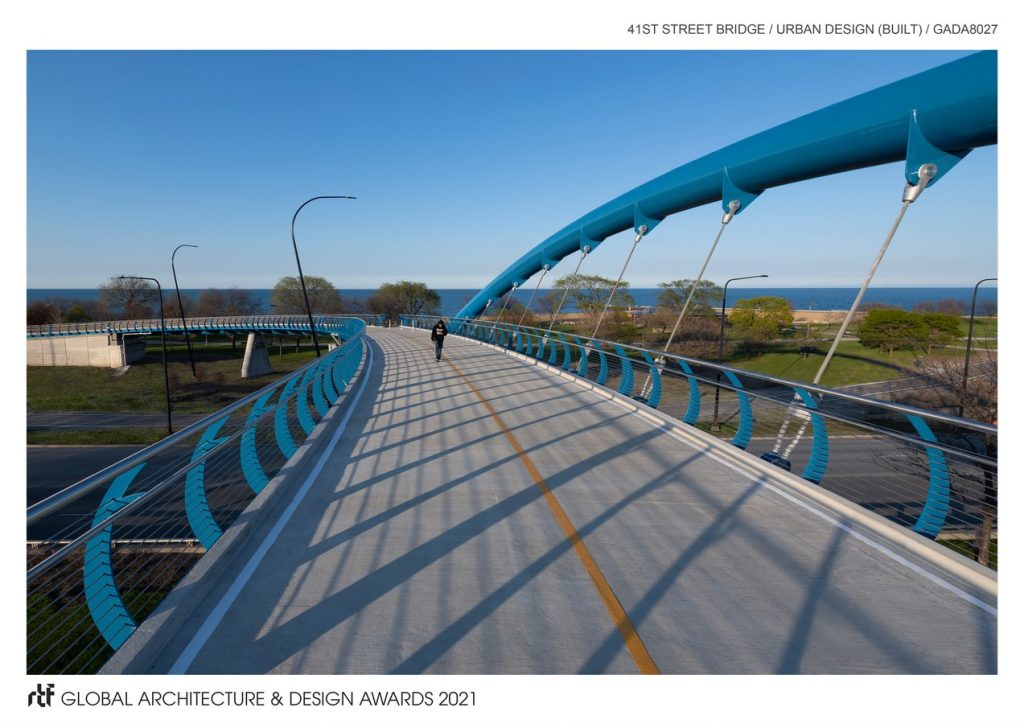
©James Steinkamp Photography
Users are gently guided to spectacular city views in all directions. The bridge projects outwards to create grand balconies at midspan. It glides gently to rest at each end of its span, with ramps supported on a rusticated concrete base that tapers into the landscape to help the bridge blend with and extend the park environment. Its west ramp hugs the east boundary of a park, creating a sculptural backdrop and low wall between the park and the train.
With its twin inclined arches on reverse curves, the 41st Street Pedestrian Bridge structure is unique in the world. Unlike typical arch bridges which are horizontally and vertically symmetrical, the 41st Street arch spans are on reverse curves with a long crest curve that rises 7 feet (2.13 meter) higher between the arches than at the outside ends of the arch at the approaches. Its arches are inclined at 30 degrees from vertical, and the deck rib is curved on a 400’ radius that is supported by hangers on one side only. The 1,500-foot (457.2 meter) long bridge creates a large, graceful S-curve to create an exciting urban promenade. Its height and length provide a rise sufficient to clear the commuter train and Lake Shore Drive, yet also allow a slope that is gentle enough for wheelchair use.
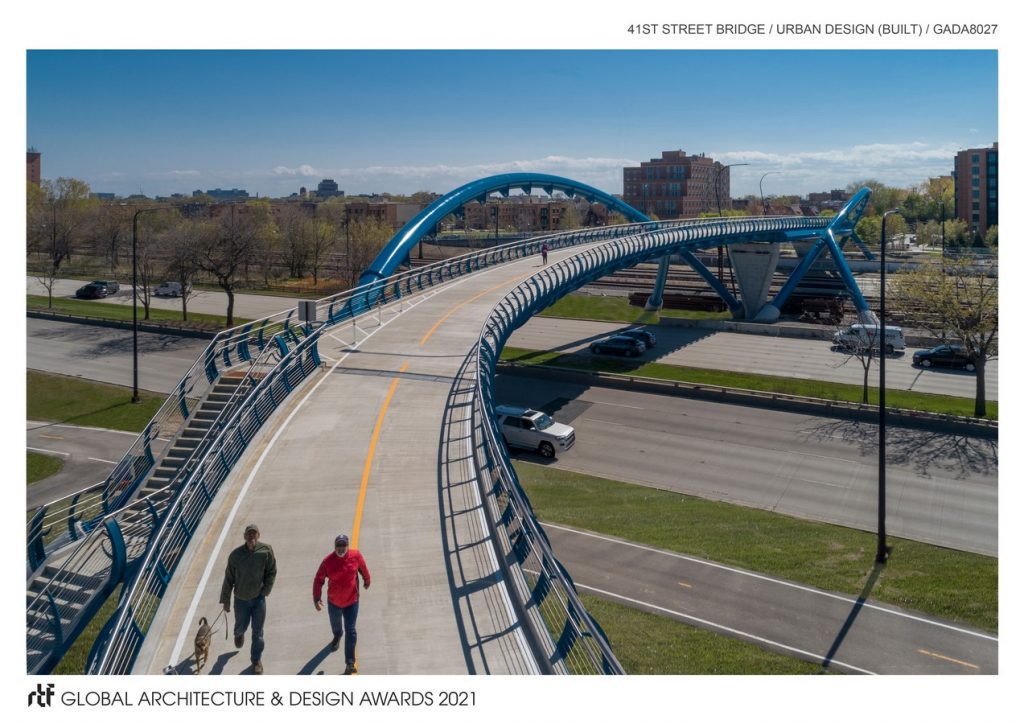
©James Steinkamp Photography
The simple and clean yet robust structural detailing uses large 48” diameter (1.2 meter) steel tube and plate sections to support a 20’ wide (65.6 meter) concrete deck. The bridge’s radiused railings raise the bridge’s curves vertically, reinforcing its dynamic sculptural form.
The bridge’s lean, muscular, dynamic form is in keeping with Chicago’s tradition structural expressiveness: Form, function, and structure are one.
- ©James Steinkamp Photography
- ©James Steinkamp Photography
- ©James Steinkamp Photography
